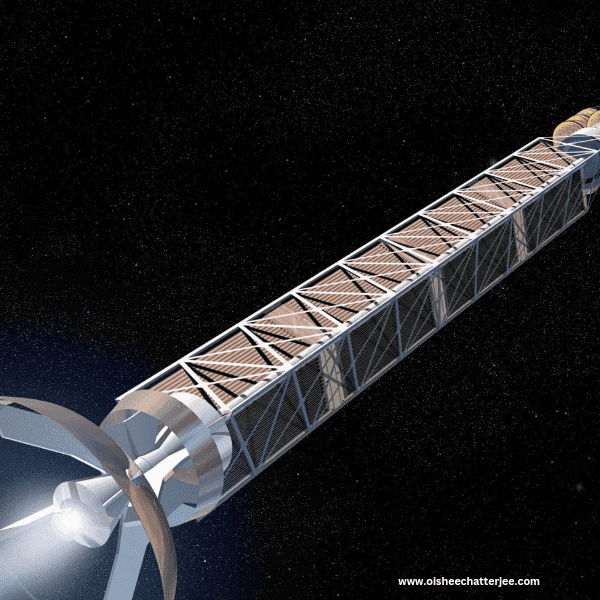Pulsed Plasma Thruster: NASA’s Fast Track to Mars?
A Skeptic’s View
NASA is talking about zipping to Mars in just two months using a new engine called a pulsed plasma thruster. It sounds like science fiction, right?

Plasma Power: Is It Really That Revolutionary?
Now, this plasma thruster concept is pretty cool, indeed. It uses electricity to heat up gas and create plasma, which then blasts out the back and propels the rocket forward. It acts like a supercharged hairdryer for space travel.
NASA claims this pulsed plasma thruster will be the most powerful and efficient engine ever built. So, it’s supposed to cut the travel time to Mars to- two months. That’s huge! But, can we really trust this new tech to get us there safely and soundly? That’s the billion-dollar question.
Mars: It’s Way Farther Than a Road Trip Across the Country
Let’s be practical, Mars is far, far away. It’s not like hopping on a flight or taking a road trip across the country. We are talking about millions of miles and a journey that typically takes months. So, a two-month trip sounds fantastic in theory, but can we trust this pulsed plasma thruster to get us there in one piece? I am not entirely convinced.
Safety First, Speed Later, That’s My Motto!
I am not saying NASA is wrong, but I want to see more evidence before I’m convinced. We’re talking about sending humans to another planet, after all! Now, here’s the kicker: Is a pulsed plasma thruster even safe for humans? That’s a great question, and one NASA is still working to answer. They need to make sure the engine is safe and reliable before sending astronauts on a Martian adventure.
FAQ:
Q. What is a pulsed plasma thruster (PPT)?
A. It’s a new kind of rocket engine that uses electricity to make a special gas for pushing the rocket.
Q. How long does it take to get to Mars now?
A.It usually takes many months.
Q. Why is going to Mars so hard?
A. It’s super far away, there’s dangerous radiation in space, and we need to bring everything we need to survive with us.
Q. Is a pulsed plasma thruster safe for humans?
A.That’s still being researched by NASA.
What do you think, fellow space fans? Are you ready to jump on the pulsed plasma thruster bandwagon, or do you share my concerns? Let’s hear your thoughts in the comments!
References : Mashable , Science direct




